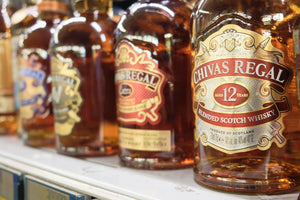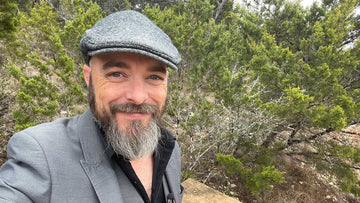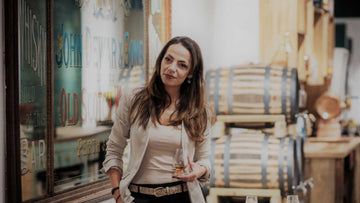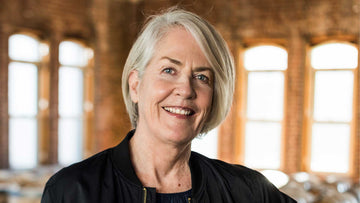Does age matter? Why are whisky drinkers obsessed with age statements?
In 2010, Chivas Brothers commissioned research which reported that 94 per cent of respondents believed that an age statement ‘served as an indicator of quality’; that 93 per cent believed that older whiskies ‘were of better quality’ and that 89 per cent ‘actively looked for an age statement when making a decision to purchase.’ The company launched an ‘Age Matters’ campaign to educate consumers about its importance, with the slogan ‘Look For The Number – Know The Age, Know Whisky’.
However, the phenomenal success of Scotch in the first decade of the 21st century resulted in a rapid depletion of aged whisky stocks. Many distillers responded by releasing ranges of No Age Statement (NAS) expressions, notably in Travel Retail, to protect stock required for their core ranges. Some, including Chivas themselves, introduced NAS alternatives to flagship 12-year old bottlings in selected markets, to tide them over the period of shortages. Many of the new NAS expressions were priced higher than discontinued products with age statements.
Whisky aficionados and bloggers took to social media to voice their dismay and discontent.
Distillers and blenders were quick to point out that an age statement is merely an indicator of maturity. Other factors, such as the size and type of the cask in which it is filled, and the climate in the warehouse in which it matures, can accelerate or lengthen the time it takes for a whisky to reach its peak condition. Meanwhile, a whisky can be over-matured - aged for too long, it can lose strength and pick up unwelcome ‘woody’ notes from the cask.
The men and women who actually make whiskies explained that they relished the greater freedom they were given when developing new NAS products: to explore and develop new aspects of flavour in a distillery’s or a blend’s character, free from the restraints of working only with spirit above a certain age.
Yet at the same time, many of their employers launched limited edition bottlings with big age statements – sometimes 40 or even 50 years old - along with eye-watering price tags running into many thousands of pounds. There were gushing press releases extolling the benefits that emerged only with great age. And greater age was equated, overtly or otherwise, with greater ‘investment’ value.
It was apparent that it wasn’t just the whisky drinker who was confused!
But the whisky trade’s ambivalent attitude to age statements is nothing new.
The beneficial effects of ageing whisky in oak casks have been known (if not always understood) for centuries. Ageing took the ‘edge’ off a newly made spirit, allowing it to develop a more mellow, flavoursome character without the ‘bite’ and sometimes the noxious character of new make. However, in the early days of whisky-making, the distiller’s job was solely that of the manufacturer: he simply made the whisky and sold it on, usually by the cask. It was up to the customers, be they individuals, pub owners or wine and spirits merchants, to decide how long they wished to ‘cellar’ the casks.
From the late eighteenth century, cheap immature spirits came to be associated with drunkenness, poverty and drinking dens. Wine and spirits merchants seeking to serve the requirements of their ‘better off’ clientele therefore stressed the maturity of their whiskies, advertising them with terms such as ‘Old’ and ‘Well Matured’. By the mid-nineteenth century, it was generally agreed in the trade that 5-10 years in wood was the optimum age for a mature spirit, and some dealers began to provide an age statement in their advertisements for special offerings.
We should mention here that age statements did not necessarily indicate the age of the youngest whisky in the vatting or blend, as they do today: that legal requirement was not introduced until 1989. Sometimes it referred only to the age of the single malts in the blend. Or it might be an ‘average’ of the ages of the whiskies that had been included. There were occasions when the bottler indicated that the age was just an approximation!
The local wine and spirit merchants supplied their customers with single malts or blended malts, bottled from small batches of casks which were easy to date. By the 1870s, however, many had expanded their businesses and begun to blend the single malts with ‘silent’ whisky from Coffey stills, mass producing a consistent branded product which they bottled and shipped around the world.
Grain whisky was a blander and cheaper ingredient than malt, and provided texture and sharpness to the blend. Well-aged single malts were vital to give each new whisky brand its distinctive character, most especially the full flavours derived from the use of peated malt or sherry cask maturation.
At first, the new breed of whisky blenders avoided specific age statements on their labels, relying on the consistency of flavour in their products to build brand loyalty. Instead, they used statements such as ‘Fine and Rare’, ‘Liqueur’ and ‘Very Old,’ to reassure the consumer that the whisky in the bottle was mature and mellow. Sometimes, borrowing from the traditions of the brandy trade, they might label their product according to ‘quality’(and price), by using a star system (Crawford’s Five Star, for example) or a ‘code’ such as O, VO and VVO to indicate the maturity of the whiskies in the blend.
Only a few, such as George Ballantine & Son, displayed age statements consistently on their labels. But this became more common at the beginning of the 20th century, in partial response to one of the greatest crises ever to rock the industry.
The phenomenal success of blended Scotch had resulted in a huge increase in the manufacture and warehousing of whisky to meet anticipated future demand. New distilleries sprang up across the country in the 1890s and others were extended. Vast warehouses were built and quickly filled, as speculators queued up to stockpile whisky as a money-spinning investment.
And then the bubble burst.
The market had already begun to fall even before the failure in 1899 of the prominent whisky company, Pattisons Ltd. The subsequent widely-reported trial of the directors for fraud simply confirmed the extent to which the perceived value of maturing whisky stocks had been artificially inflated by speculators. Meanwhile, the advent of a series of economic recessions around the world made plain a deeper truth; that while it was relatively easy, with sufficient funds, to make and warehouse huge stocks of whisky, it was not so simple a task to find new customers and markets for all this extra spirit.
Scotland’s warehouses bulged. The whisky trade sweated.
A decline in the popular taste for whisky in the early 1900s accompanied by steep rises in Excise duties in some markets, especially in the UK, made it impossible to clear the whisky stock surplus simply by price cutting. So many companies made a virtue of necessity: they added older stock in their blends and, far more than ever before, they advertised the fact with age statements on their labels.
Johnnie Walker is perhaps the most famous of the converts. In 1909, the owners relaunched their core range of blended Scotches as White Label, with a 6 years old statement; Red Label (10 years old) and Black Label (12 years old). Popular brands such as Buchanan’s introduced new expressions alongside their NAS standard blends, and 15, 20 and even 25 years old expressions became widely available in the years before the First World War.
Age statements helped the popularity of Scotch whisky in the USA after Prohibition. Much of the liquor available to Americans during the period 1920-33 had been immature spirit manufactured (with little thought for quality control!) by bootleggers. This rough spirit was often harsh and sometimes downright dangerous to health.
Americans yearned for the good old days of ‘smooth’ mature sipping whiskies. An age statement on a bottle of Scotch provided reassurance that the spirit was mild and mellow, a more respectable and sophisticated product than Prohibition booze. US sales of blended Scotch soared.
The upward trajectory of Scotch in the USA was halted by the disruption of whisky production during the Second World War, and the depletion of aged stocks resulted in the temporary removal of age statements from ‘premium’ brands such as Ballantine’s, Dewar’s and Johnnie Walker in the 1940s and early 1950s. The industry giant Seagram, however, had been quietly amassing stocks for many years in Scotland. In 1951, the company launched Chivas Regal in the USA as a 12 years-old blended Scotch. The brand was one of the most successful premium spirits in the USA during the 1950s and 1960s. Its aspirational advertising campaigns helped confirm the number 12 in American eyes as the optimum age for a premium Scotch.
As an American importer explained to Bill Smith Grant after the war, when discussing the reintroduction of The Glenlivet, “We have found that tradition in the United States demands that we sell either an 8 year old or a 12 year old Scotch, and we find that trying to get in between puts us into an age class that is not generally acceptable by American buyers.”
The premium whisky market was to spend decades under the Tyranny of Twelve!
Not that age statements were essential for success in the USA, or elsewhere. Throughout the 1950s and 1960s, NAS blends such as Dewar’s, Haig, J&B and Cutty Sark prospered. Johnnie Walker Red Label remained popular despite discarding its age statement after the Second World War. And Glenfiddich became the world’s best-selling single malt after dropping its age statement, before the standard expression became 12 years-old in 2002.
There was an evolution in the use of age statements in the 1990s. Brands such as Macallan and Glenmorangie upped the ante with 18-years old expressions of their flagship single malt offerings. 15-years old became a familiar ‘intermediate’ premium age. Blended Scotches followed, and the age statement arms race carried others to 25-years old. But these greater age statements were achieved using stock left over from the ‘whisky loch’ of the 1980s, when there had been a slump in demand for Scotch and another overabundance of maturing stock. Which brings us back to the 2010s…
Consumer demand in China and other emerging markets for age statements on premium whiskies, as well as the thriving secondary market in ‘collectable’ whiskies, has reinforced demand in recent years. This, along with the easing of stock restrictions, has encouraged whisky companies to restore age statements in many areas such as Travel Retail. Marketers, who spent much of the 2010s explaining to the consumer why age is not the most important factor in defining a whisky’s quality, have at the same time been playing on the consumer’s deep-seated belief that, actually, it probably is! It’s a simple fact of human nature that we are conditioned to think (at least subconsciously) of numbers as ‘scores’: that a whisky with the number 18 on the label must surely be worth more than one with a 12.
So age continues to ‘matter’ in the modern whisky world. Nevertheless, there will always be a place for NAS whiskies with a proven reputation for quality – not just for standard blended Scotches, but also for more high-ticket bottles. Monkey Shoulder, the on-trade’s favourite blended malt, and Johnnie Walker Blue Label, the leading super-premium blended Scotch, carry no age statements. Ardbeg’s popular Uigeadail and Corryvreckan expressions were introduced to the core range in the early 2000s, priced above the flagship 10 years old. And the independent Compass Box has introduced a range of NAS whiskies with a cult following and a glowing reputation for innovative whisky creation.
You pays your money and you takes your choice!







